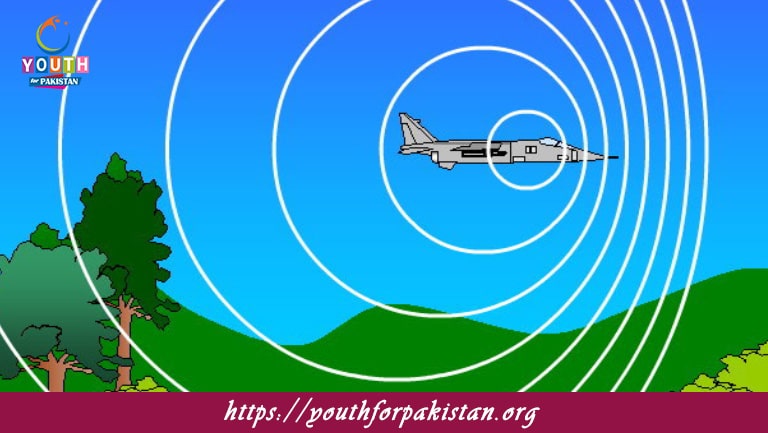Doppler Effect MDCAT MCQs with Answers

Welcome to the Doppler Effect MDCAT MCQs with Answers. In this post, we have shared Doppler Effect Multiple Choice Questions and Answers for PMC MDCAT 2024. Each question in MDCAT Physics offers a chance to enhance your knowledge regarding Doppler Effect MCQs in this MDCAT Online Test.
Doppler Effect MDCAT MCQs Test Preparations
The Doppler Effect is observed when there is a change in:
A) Speed of the source
B) Frequency of the wave
C) Direction of the wave
D) Speed of sound in the medium
When the source of sound waves approaches an observer, the frequency observed is:
A) Lower
B) Higher
C) Unchanged
D) Zero
When the source of sound waves moves away from the observer, the wavelength observed is:
A) Shorter
B) Longer
C) Unchanged
D) Zero
The Doppler Effect can be observed with:
A) Only sound waves
B) Only light waves
C) Sound, light, and electromagnetic waves
D) Only mechanical waves
In the Doppler Effect, if the observer is moving towards a stationary source, the observed frequency is:
A) Higher
B) Lower
C) Unchanged
D) Zero
The Doppler shift in the frequency of light due to the relative motion of the source and observer is known as:
A) Redshift
B) Blueshift
C) Sound shift
D) Velocity shift
If both the source and observer are moving towards each other, the observed frequency is:
A) Lower
B) Higher
C) Unchanged
D) Zero
If a car is approaching you with a speed of 20 m/s and the speed of sound is 340 m/s, the observed frequency is:
A) Decreased
B) Increased
C) Unchanged
D) Zero
The Doppler Effect can be used to measure:
A) Distance of celestial objects
B) Speed of moving objects
C) The size of objects
D) The temperature of objects
The Doppler Effect causes a shift towards higher frequencies when:
A) The source moves away from the observer
B) The observer moves away from the source
C) The source moves towards the observer
D) Both the source and observer move away from each other
When the source of sound is stationary and the observer is moving away, the observed frequency is:
A) Higher
B) Lower
C) Unchanged
D) Zero
In the Doppler Effect for sound waves, the frequency shift depends on:
A) The amplitude of the waves
B) The frequency of the waves
C) The relative speed of the source and observer
D) The temperature of the medium
The Doppler Effect for light waves leads to a redshift when:
A) The source is approaching
B) The observer is moving away
C) The source is moving away
D) The observer is approaching
If a source of sound emits a frequency of 500 Hz and the observer moves towards the source at 30 m/s, with the speed of sound at 340 m/s, the observed frequency is:
A) 500 Hz
B) 530 Hz
C) 670 Hz
D) 450 Hz
The Doppler Effect is used in:
A) Radar guns
B) Optical telescopes
C) Satellite dishes
D) Radio receivers
For light waves, the Doppler Effect can cause a shift in:
A) Intensity
B) Polarization
C) Wavelength
D) Amplitude
In the Doppler Effect, if the speed of sound in the medium is increased, the frequency shift:
A) Decreases
B) Increases
C) Remains unchanged
D) Becomes zero
The Doppler shift formula for light waves is different from sound waves because:
A) Light waves are not affected by the medium
B) Light waves travel faster than sound waves
C) Light waves experience no Doppler shift
D) Light waves require a different reference frame
The observed frequency for a moving source and a moving observer is calculated using:
A) The Doppler formula for sound waves
B) The relativistic Doppler formula
C) The formula for static sources
D) The wavelength formula
The Doppler Effect in astronomy helps in determining:
A) The temperature of stars
B) The distance of stars
C) The velocity of stars and galaxies
D) The composition of stars
If the Doppler shift results in a frequency higher than the emitted frequency, the source is:
A) Moving away from the observer
B) At rest
C) Moving towards the observer
D) Stationary
The change in frequency observed due to the Doppler Effect is greater when:
A) The source is stationary
B) The observer is stationary
C) Both source and observer are moving
D) Both are stationary
For a car moving with a speed of 50 m/s and the speed of sound being 340 m/s, the Doppler shift is:
A) Zero
B) Small
C) Significant
D) Independent of speed
The Doppler Effect can be demonstrated using:
A) A stationary speaker and a moving observer
B) A moving speaker and a moving observer
C) A moving speaker and a stationary observer
D) All of the above
When an ambulance approaches and passes by, the observed pitch:
A) Increases and then decreases
B) Decreases and then increases
C) Remains constant
D) Stops
The Doppler Effect for electromagnetic waves includes:
A) A change in amplitude
B) A change in frequency and wavelength
C) A change in polarization
D) A change in intensity
The frequency shift due to the Doppler Effect is greater if:
A) The speed of sound is higher
B) The source and observer are further apart
C) The relative speed between source and observer is higher
D) The wavelength is longer
The relativistic Doppler shift formula accounts for:
A) High-speed motion
B) Low-speed motion
C) Static sources
D) Non-relativistic speeds
When the source is stationary and the observer is moving away, the Doppler Effect causes the wavelength to:
A) Shorten
B) Lengthen
C) Remain unchanged
D) Become zero
For a stationary source and moving observer, the observed frequency increases when:
A) The observer is moving away
B) The observer is approaching
C) The observer is stationary
D) The source is moving away
The Doppler Effect formula for sound waves assumes:
A) The speed of sound is constant
B) The observer’s speed is zero
C) The medium is changing
D) The wavelength is variable
The Doppler Effect is used in which of the following technologies?
A) Weather radar
B) X-ray imaging
C) MRI scans
D) Optical microscopes
If both the source and the observer are moving towards each other, the observed frequency will be:
A) The same as the source frequency
B) Higher than the source frequency
C) Lower than the source frequency
D) Zero
The Doppler Effect in sound waves can be described as:
A) A shift in frequency due to relative motion
B) A shift in amplitude due to relative motion
C) A shift in wavelength only
D) A shift in sound intensity only
In the Doppler Effect, if the source and observer are both moving away from each other, the observed frequency is:
A) The same as the emitted frequency
B) Higher than the emitted frequency
C) Lower than the emitted frequency
D) Zero
The Doppler shift for sound can be observed with:
A) Both stationary and moving sources
B) Only moving sources
C) Only stationary sources
D) Only moving observers
For an observer moving towards a stationary source, the frequency observed is:
A) The same as the source frequency
B) Decreased
C) Increased
D) Zero
The change in observed frequency due to the Doppler Effect is:
A) Directly proportional to the speed of sound
B) Inversely proportional to the speed of the observer
C) Directly proportional to the relative speed of source and observer
D) Inversely proportional to the distance between source and observer
If you are interested to enhance your knowledge regarding Physics, Chemistry, Computer, and Biology please click on the link of each category, you will be redirected to dedicated website for each category.





